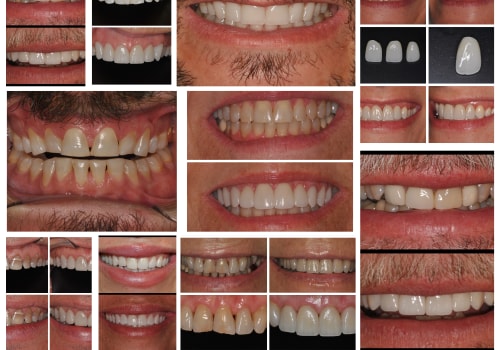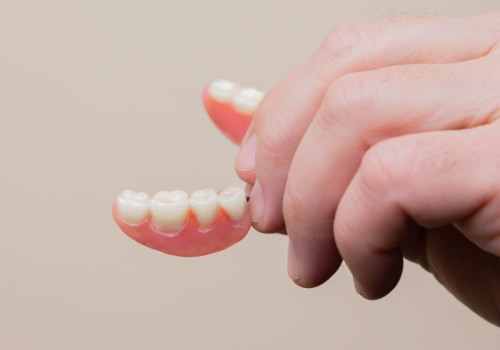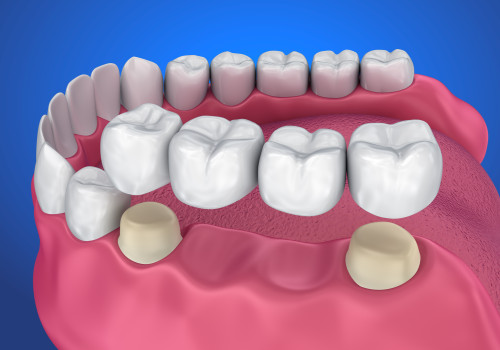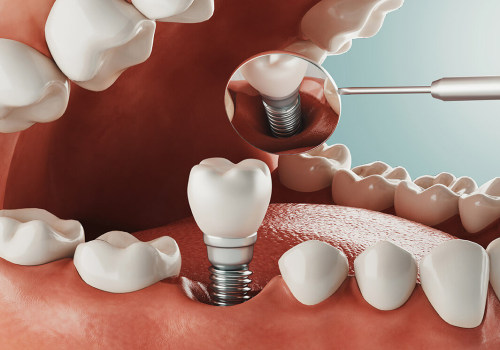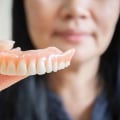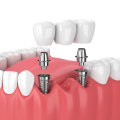Are you tired of dealing with traditional dentures that constantly shift and cause discomfort? Are you looking for a solution that will provide better stability and aesthetics for your missing teeth? Look no further than combining implants with traditional dentures. This innovative approach combines the best of both worlds to give you a natural-looking, secure, and long-lasting solution for your dental needs. Implant-supported dentures have become increasingly popular in recent years due to their numerous benefits. By anchoring the dentures to dental implants, they are able to provide better stability and function compared to traditional dentures. This means no more worrying about your dentures slipping or falling out while eating or speaking. But what exactly are implants and how do they work with traditional dentures? In this article, we will delve into the details of this combination treatment and discuss why it is a game-changer for those seeking a more comfortable and aesthetically pleasing solution for their missing teeth. We will also explore some before-and-after cases of patients who have undergone this treatment, giving you a better understanding of the results you can expect.
Whether you are considering this option for yourself or simply curious about the process, read on to learn everything you need to know about combining implants with traditional dentures. As we age, our jawbone naturally begins to shrink, causing dentures to no longer fit properly. This can lead to difficulties with eating and speaking, as well as discomfort and embarrassment. By combining implants with traditional dentures, we can prevent this issue and provide a more long-term solution. Implants are small titanium posts that are surgically placed into the jawbone. These act as anchors for the denture, providing a stable foundation for it to sit on.
By attaching the denture to the implants, it becomes much more secure and eliminates any slipping or movement. One of the main benefits of combining implants with traditional dentures is improved stability. With traditional dentures, patients often have to use messy adhesives to keep them in place. However, with implant-supported dentures, there is no need for adhesives as they are securely attached to the implants. This not only provides a more comfortable experience for the patient but also allows them to eat and speak without worrying about their dentures shifting. Another advantage is the improved aesthetics.
Traditional dentures can often look artificial and unnatural, causing some patients to feel self-conscious. By combining implants with traditional dentures, we can create a more natural-looking smile that blends in seamlessly with the rest of the teeth. This can greatly improve the patient's confidence and self-esteem. It's important to note that not all patients are suitable candidates for implant-supported dentures. Factors such as jawbone density, medical history, and lifestyle habits will need to be considered by a dental professional.
It's best to consult with your dentist to determine if this is the right option for you. In conclusion, combining implants with traditional dentures can provide numerous benefits for patients struggling with loose and uncomfortable dentures. By providing improved stability and aesthetics, this treatment option can greatly enhance the overall quality of life for individuals with missing teeth.
Who is a Suitable Candidate for Implant-Supported Dentures?
Implant-supported dentures offer a more secure and natural-looking alternative to traditional dentures. However, not everyone is a suitable candidate for this treatment option. Understanding the factors that may affect your eligibility is important before considering this option.The first factor to consider is the condition of your jawbone. Implants require a certain amount of bone density to be successfully placed and integrated into the jaw. If you have been missing teeth for a long time, your jawbone may have deteriorated, making it difficult for implants to be placed. In such cases, bone grafting may be necessary to build up the bone in order to support the implants.
Another important factor is your overall oral health. Good oral hygiene is essential for the success of implant-supported dentures. If you have gum disease or other oral health issues, these need to be addressed before proceeding with this treatment option. Your general health and any medical conditions you may have can also affect your eligibility for implant-supported dentures.
Certain medical conditions such as diabetes and autoimmune disorders can impact the healing process and make it more difficult for the implants to integrate into the jawbone. Lastly, it is important to have realistic expectations about the results of this treatment. While implant-supported dentures can greatly improve stability and aesthetics, they may not be suitable for everyone. Your dentist will assess your individual case and determine if you are a suitable candidate for this option.
The Process: How Implants and Traditional Dentures Work Together
Combining implants with traditional dentures is a highly effective way to improve stability and aesthetics for those dealing with missing teeth.But how exactly do these two options work together? In this section, we will take a closer look at the process involved in combining implants and traditional dentures. First, let's briefly review what implants and traditional dentures are. Implants are small titanium posts that are surgically placed into the jawbone to act as artificial tooth roots. These implants provide a sturdy foundation for replacement teeth, such as dentures, bridges, or crowns.
Traditional dentures, on the other hand, are removable prosthetic teeth that sit on top of the gums and are held in place by suction or adhesive. Now, let's dive into the steps involved in combining these two options: 1.Consultation and Planning The first step in the process is to consult with your dentist to determine if you are a good candidate for combining implants and traditional dentures. Your dentist will thoroughly examine your oral health and take x-rays to assess your jawbone density.
2.Implant Placement
If you are deemed a suitable candidate, the next step is to undergo surgery to have the implants placed into your jawbone.This procedure is typically done under local anesthesia and can take several hours depending on the number of implants needed.
3.Healing and Integration
After the implants are placed, it will take several months for them to fully integrate with the jawbone. During this time, a temporary denture may be worn to cover the implant sites.4.Denture Fabrication
Once the implants have fully integrated, your dentist will take impressions of your mouth to create a custom denture that will fit securely onto the implants.5.Attachment of Denture to Implants Finally, the custom denture will be attached to the implants using specialized connectors or clips. This allows for a secure and stable fit, eliminating any concerns of slipping or shifting. Overall, the process of combining implants with traditional dentures involves careful planning and a few key steps to ensure a successful outcome. By working together, these two options provide a natural-looking and long-lasting solution for those dealing with missing teeth. If you're tired of dealing with loose and uncomfortable dentures, it may be time to consider combining them with implants.
This treatment option offers improved stability and aesthetics, providing a more long-term solution for missing teeth. Consult with your dentist to determine if this is the right choice for you.
